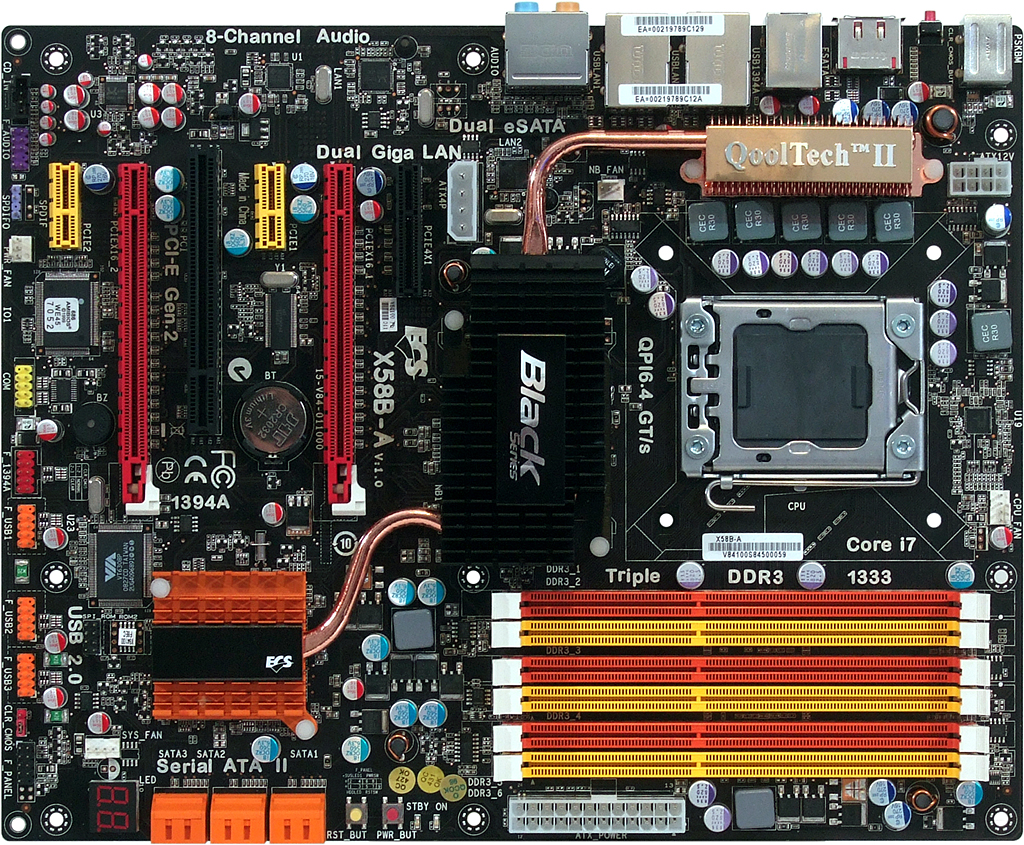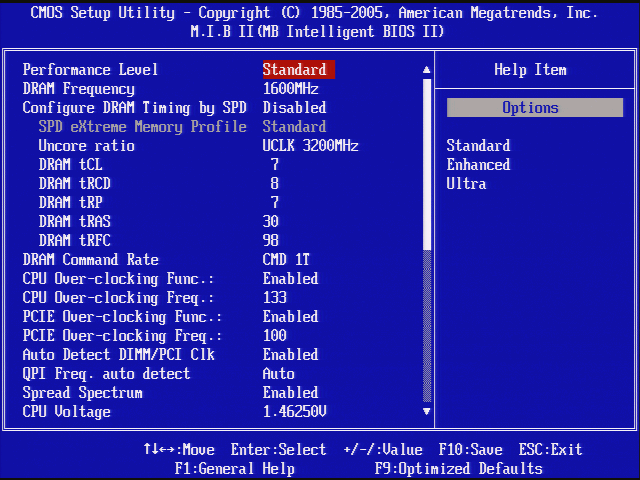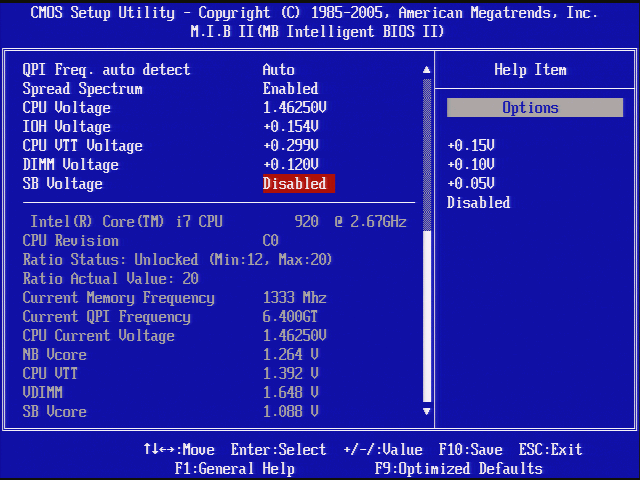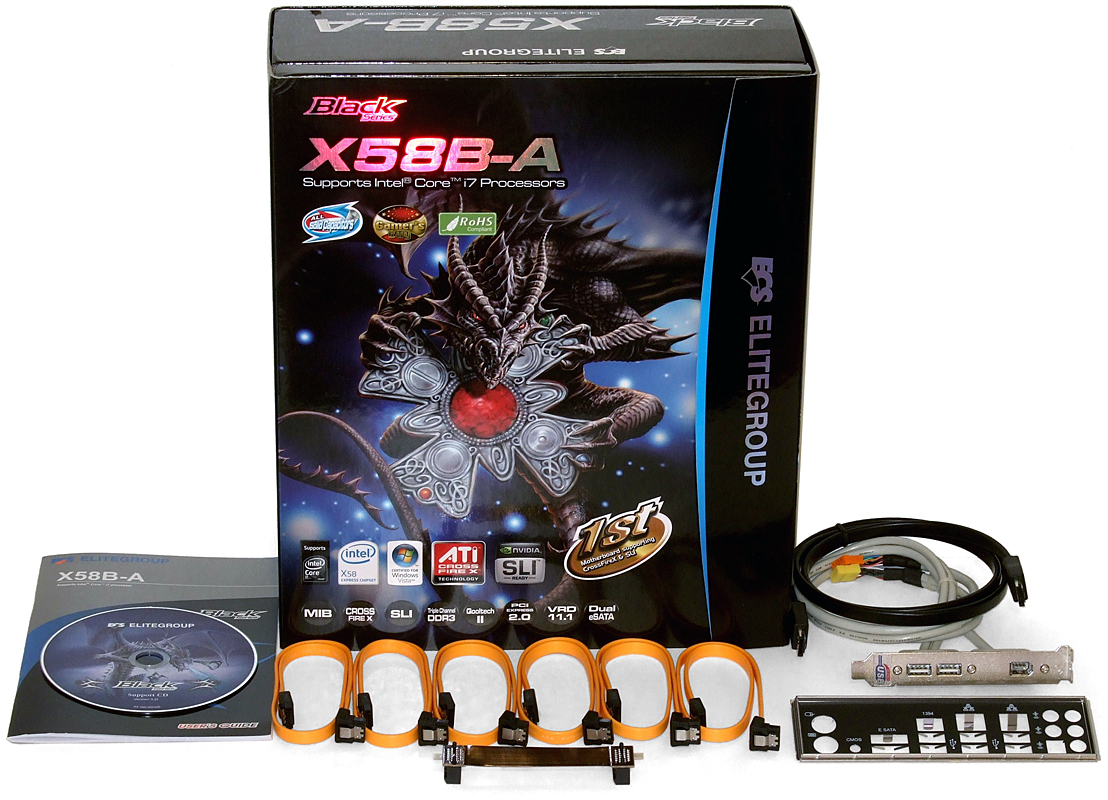X58 On A Budget: Seven Sub-$200 Core i7 Boards
ECS X58B-A
The ECS X58B-A briefly dropped below $200 prior to today’s comparison, but is now found for around $220 online. We’re including it today since it was received and tested while still within budget limits, with hopes that it will once again drop below $200.
A quick look at its feature set shows that a second network controller is all that separates the X58B-A from a typical sub-$200 Core i7 motherboard, though by that standard two other contenders are above-average. Other enthusiast-oriented features, such as its two-digit Port 80 diagnostics display, onboard power/reset buttons, and I/O panel CLR_CMOS button are matched by several competing models.
ECS has done away with some of the legacy clutter still found on most motherboards, such as Ultra ATA and Floppy interfaces. Ultra ATA is no longer useful in new builds, and its removal saves both money and motherboard space, but floppies are still required in many XP installations for adding RAID drivers. It’s also worth noting that floppy interfaces are nearly cost-free, since the controller is still present through the motherboard’s multi-I/O IC.
Positioning of the X58 Express northbridge limits the X58B-A to six expansion slots, with an auxiliary power connector found where the uppermost expansion slot would have been. This allowed the CPU socket and DIMM slots to also be moved around half an inch farther from the top edge, though the only benefits we can think of are easier trace routing and added clearance between an oversized CPU cooler and top-mounted power supply.
The northbridge’s 36 PCIe 2.0 lanes are divided among two full-bandwith x16 slots and a single x4 slot, with three spaces separating the two x16 slots for improved graphics card airflow. Making the x4 slot more practical is room for full-length expansion cards, though ECS frustrates us by using a closed-end slot. Though not present, an open-ended x4 slot could have supported a x8 RAID card or a third graphics card in x4 mode.
Removing the Ultra ATA and floppy headers gave us less to complain about concerning X58B-A layout, though we’re still disappointed to se the front-panel audio connector in the bottom-rear corner. We should also note at least once in every comparison that forward-facing SATA ports can potentially be blocked by the lower drive cage of legacy case designs, though most ATX cases have already been updated to prevent any such issues.
BIOS
Get Tom's Hardware's best news and in-depth reviews, straight to your inbox.
BIOS clock, timing, and voltage ranges can be found on Page 17’s overclocking comparison.
ECS’s X58B-A “M.I.B II” menu has a fairly short list of overclocking controls, and some are somewhat confusing. For example, increasing “Performance Level” can actually decrease CPU speed, as the “Ultra” option drops CPU multiplier to 12x and locks CPU Voltage at 1.25V.
In fact, changing the “Performance Level” setting is the only way to alter the CPU multiplier at all, and we were forced to use this setting to evaluate X58B-A FSB-overclocking capabilities.
A full set of DRAM ratios are also available, but altering them above DDR3-1333 requires manually increasing the Uncore Ratio to at least twice the DRAM Frequency setting. Furthermore, the motherboard is unbootable at DRAM ratios above the “1600” setting unless an “eXtreme Memory Profile” is chosen, and using one of those boosts the memory voltage to a CPU-risking 1.76V! The X58B-A is one of only two X58 motherboards we had to test at DDR3-1600, rather than the DDR3-1866 setting normally used in Core i7 motherboard roundups.
Accessories
The X58B-A supports both SLI and CrossFire, but we were surprised to find only a CrossFire bridge in the box. The reason for this surprise is that SLI-capable graphics cards rarely if ever include an SLI bridge, while CrossFire-cable graphics cards usually do.
Other surprises include a full set of six SATA cables and an eSATA cable. Most other manufacturers in this price class leave out a few cables to economize.





